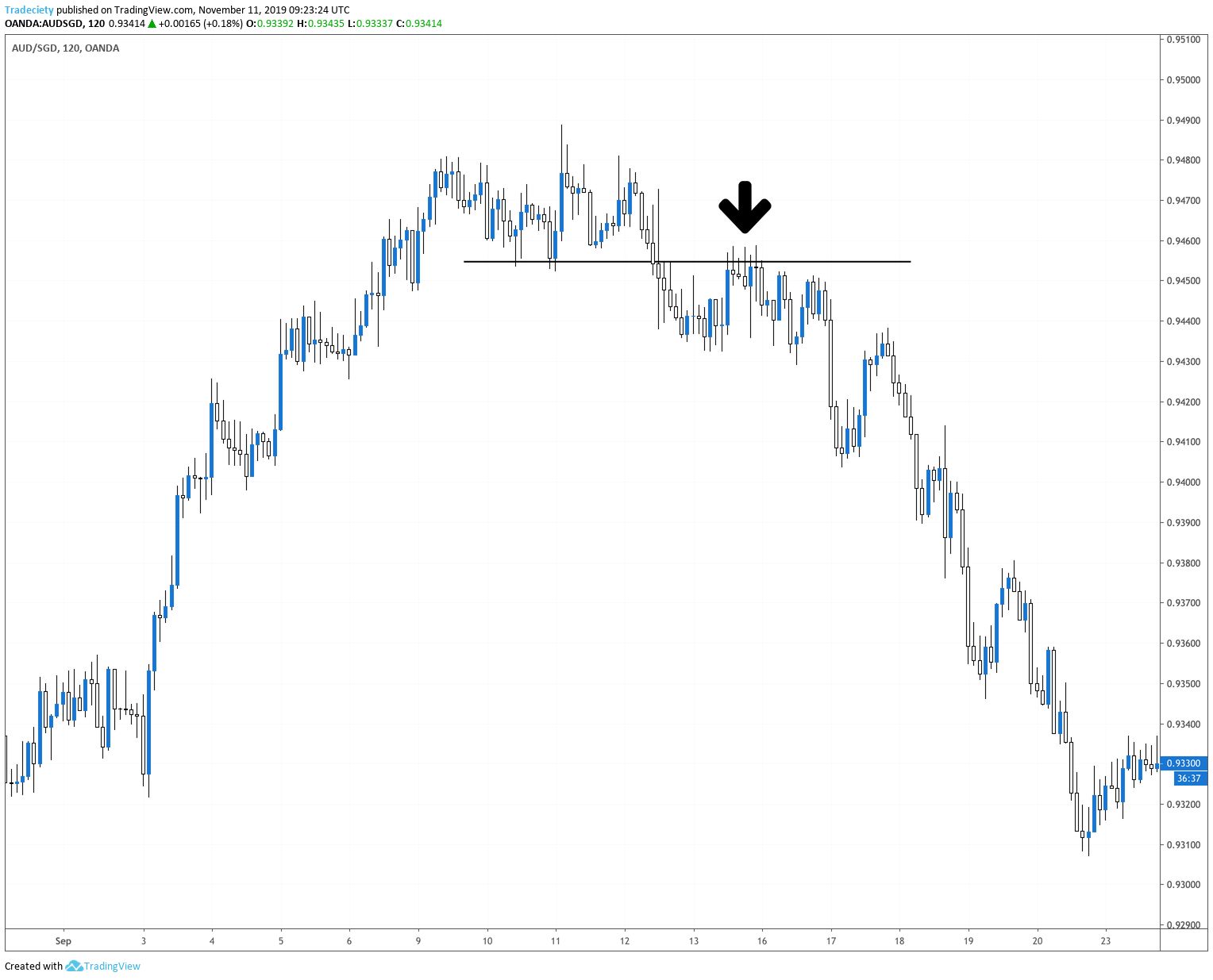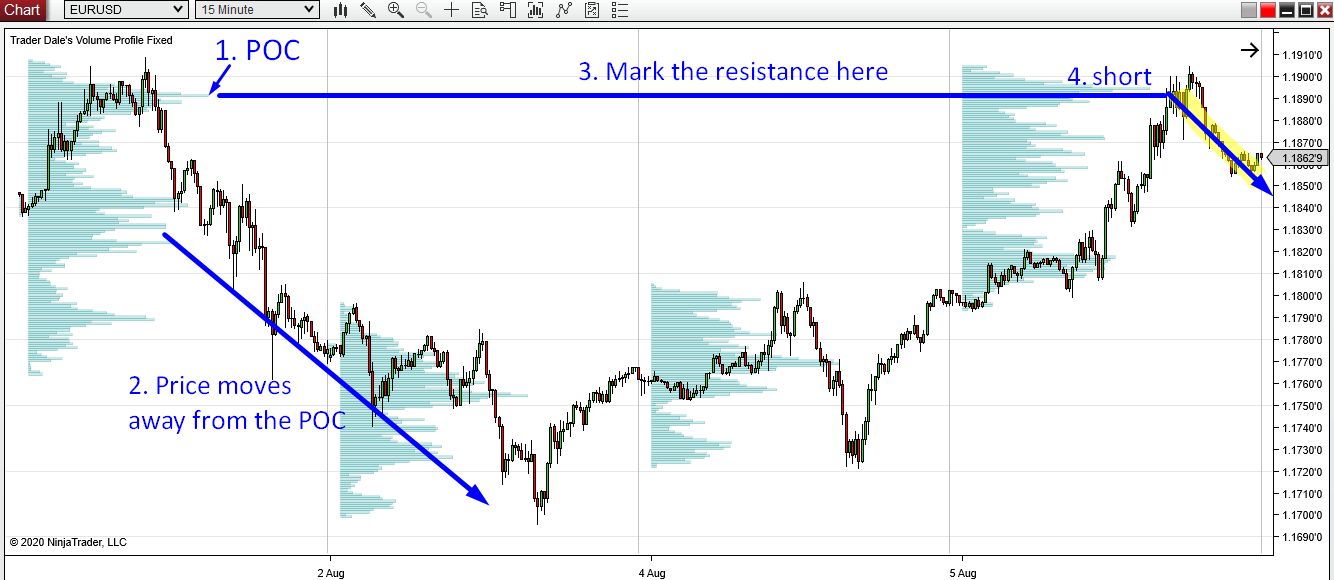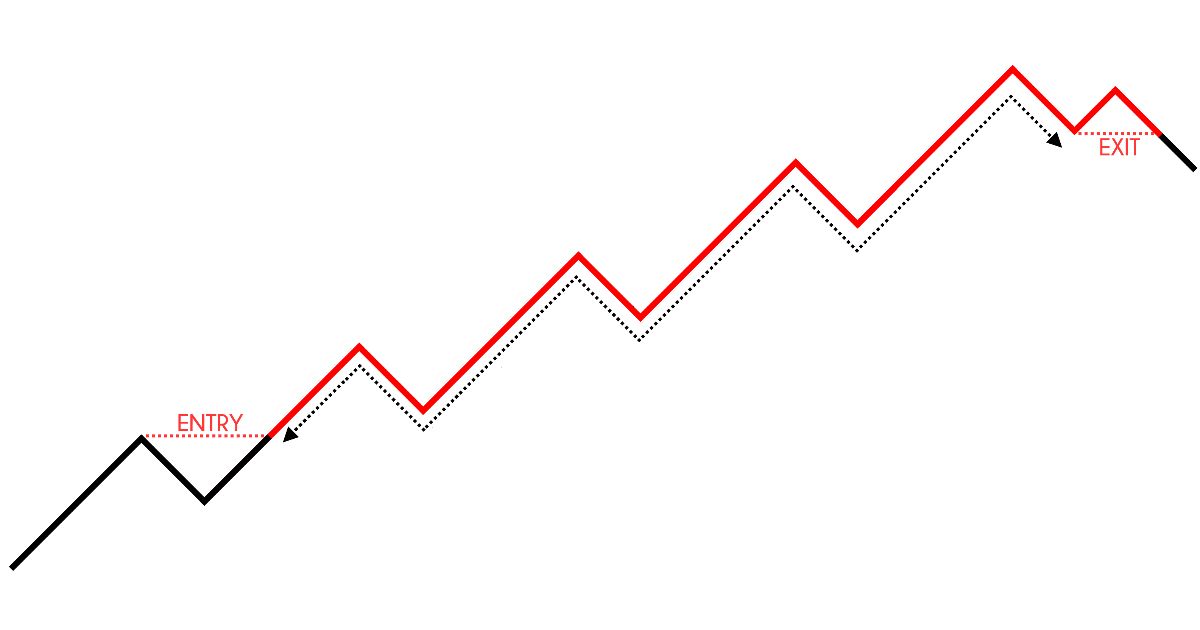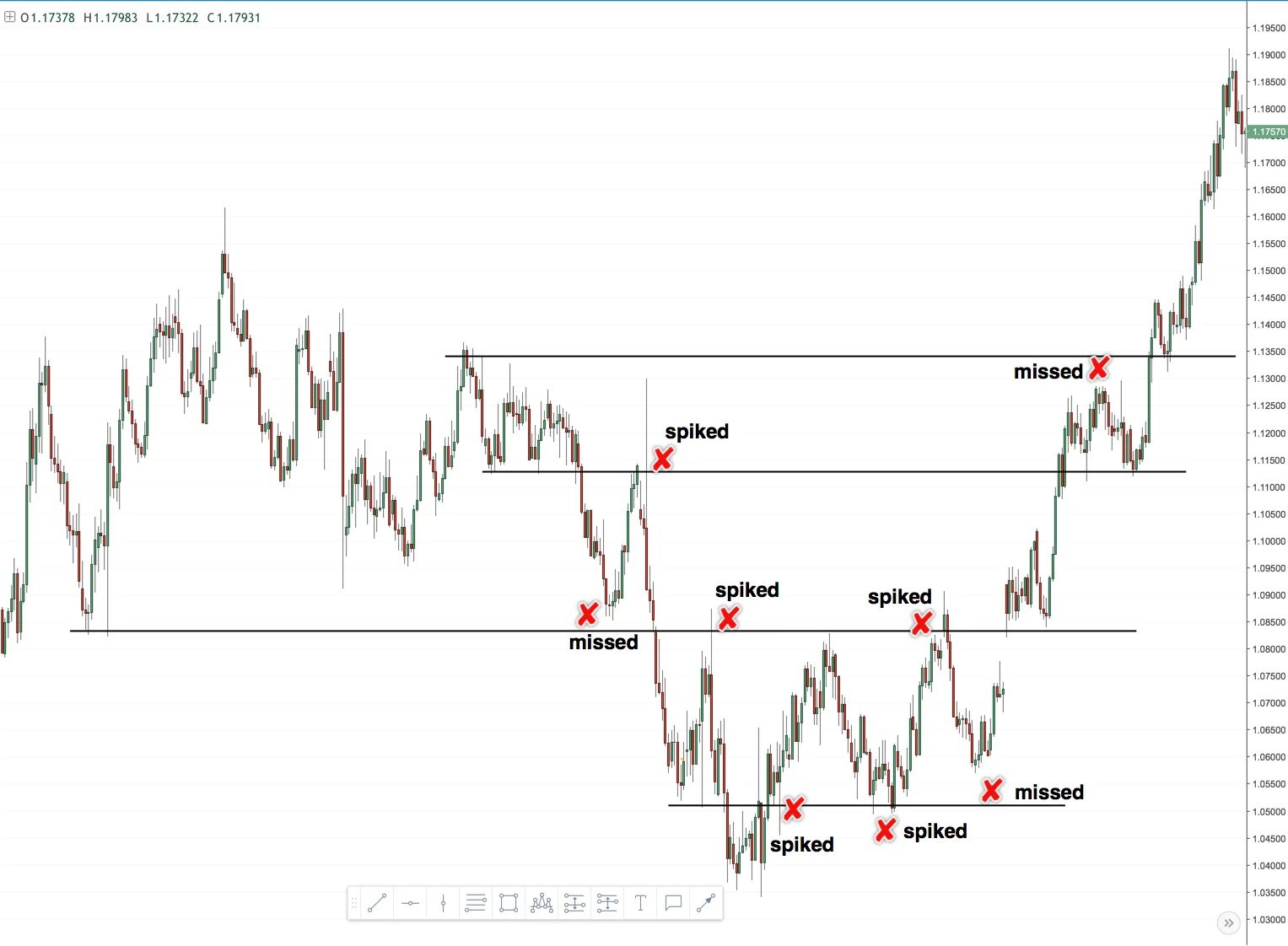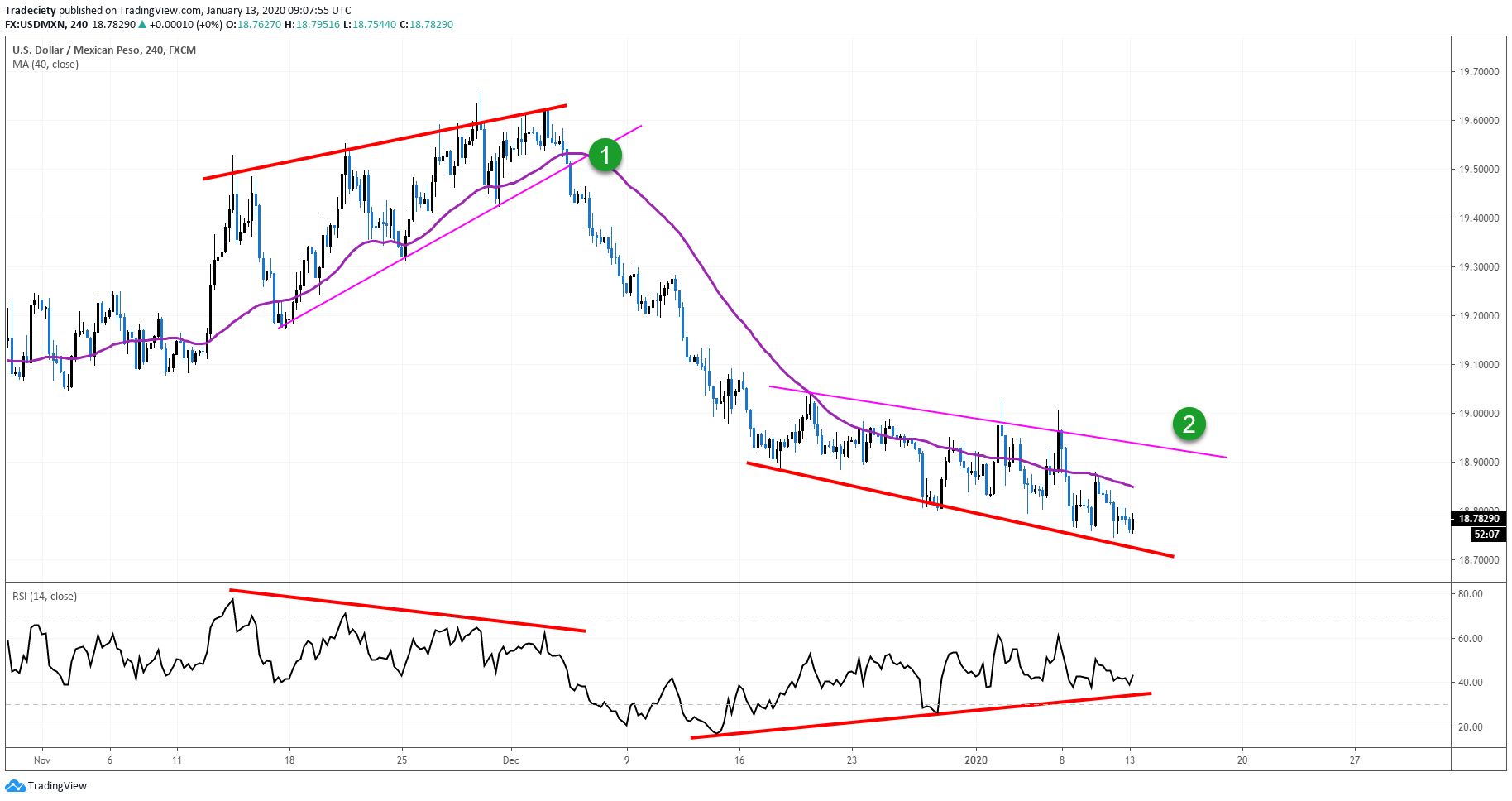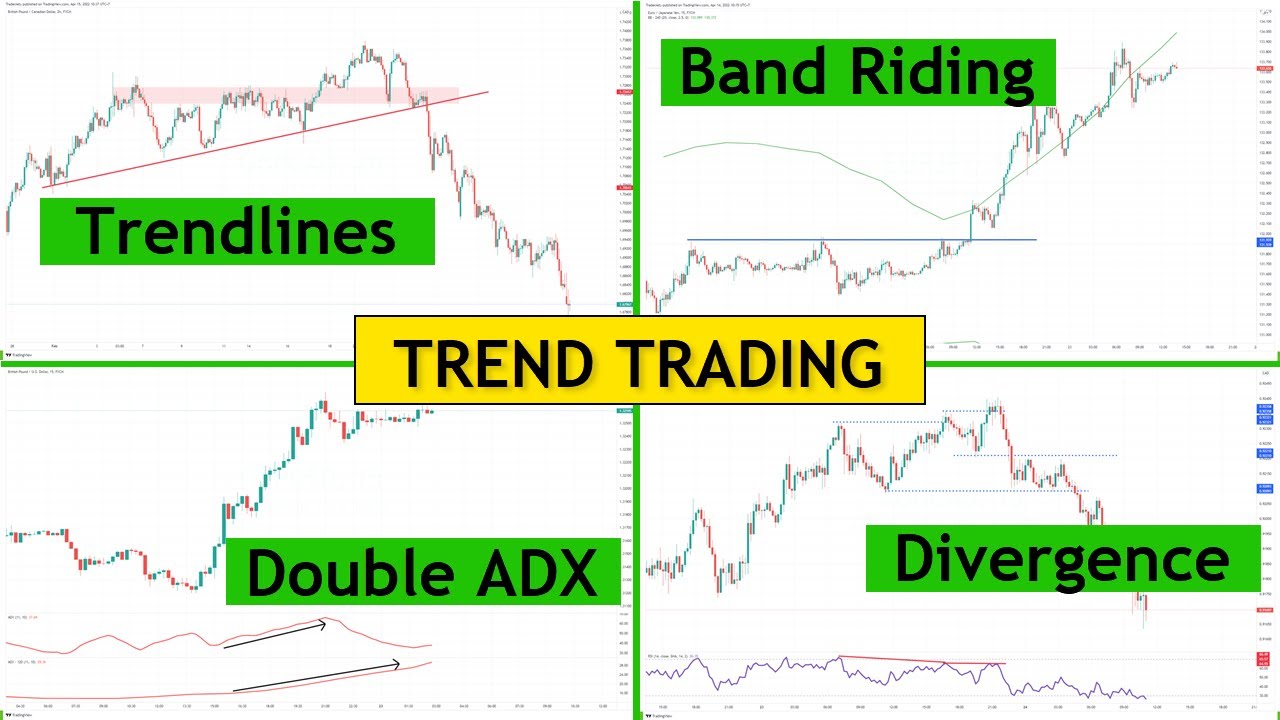Introduction
When it comes to trading the financial markets, understanding various price patterns and market dynamics is key to success. One such important concept is the pullback. A pullback refers to a temporary reversal in the direction of a prevailing trend before the trend continues. It is a common occurrence in all trading markets and can offer profitable opportunities for traders.
In simple terms, a pullback can be thought of as a slight price retracement or a short-term pause in a larger trend. It is often seen as a healthy and natural part of a market’s movement, allowing traders to enter or add positions at more favorable prices.
The importance of pullbacks in trading cannot be overstated. They provide traders with opportunities to join an established trend at better price levels, while also offering potential exit points for those looking to take profits. By understanding how to identify and trade pullbacks effectively, traders can potentially improve their overall trading performance and increase their chances of success.
It is important to differentiate pullbacks from other similar price patterns, such as reversals or consolidations. While pullbacks are temporary pauses within a larger trend, reversals indicate a complete change in the trend direction. Consolidations, on the other hand, refer to a period of range-bound trading with no clear trend. By understanding these distinctions, traders can better identify and capitalize on pullback opportunities.
In the following sections, we will delve into the key aspects of pullbacks, including how to identify them, strategies to trade them, common mistakes to avoid, and examples of successful pullback trades. We will also provide tips on managing risk effectively to protect capital when trading pullbacks.
Definition of Pullback in Trading
Before we dive into the intricacies of pullback trading, let’s establish a clear definition of what a pullback is in the context of trading. A pullback, also known as a retracement or a correction, refers to a temporary reversal in the price of an asset within an existing trend. It is a brief pause or countertrend movement before the prevailing trend resumes.
A pullback occurs when the price moves against the current trend for a short period, usually retracing a portion of the previous price movement. For example, in an uptrend, a pullback occurs when the price temporarily decreases before continuing higher. In a downtrend, a pullback happens when the price temporarily rises before resuming its downward trajectory.
It is essential to note that pullbacks are not to be confused with trend reversals. While a pullback is a temporary interruption in the prevailing trend, a trend reversal indicates a complete change in the market direction. Pullbacks are considered normal and expected within a healthy trend, while reversals signal a potential shift in market sentiment.
The duration of a pullback can vary, ranging from a few minutes in intraday trading to several weeks or months in longer-term trends. The magnitude of a pullback is typically expressed as a percentage or a specific price retracement level, such as a 38.2% Fibonacci retracement or a specific moving average.
Understanding the concept of pullbacks is crucial for traders as they offer potential trading opportunities. By correctly identifying a pullback, traders can position themselves to enter the market at more favorable prices and ride the trend once it resumes. Successful traders utilize pullbacks as a means to enter trades with improved risk-reward ratios and increase the probability of profitable outcomes.
In the next sections, we will explore the significance of pullbacks in trading and discuss various techniques to identify and trade pullbacks effectively. We will delve into the nuances of pullback trading strategies, provide examples of successful pullback trades, and offer guidance on avoiding common pitfalls when trading pullbacks.
Importance of Pullbacks in Trading
Pullbacks play a significant role in trading and offer valuable opportunities for traders to enter or add to positions in existing trends. Understanding the importance of pullbacks can help traders navigate the markets more effectively and improve their overall trading performance.
One key reason why pullbacks are important is that they provide traders with better entry points into established trends. By waiting for a pullback, traders can avoid entering the market at the top of an uptrend or the bottom of a downtrend. This allows them to enter positions with improved risk-to-reward ratios, increasing the likelihood of profitable trades.
Moreover, pullbacks offer traders a chance to manage their positions more effectively. For traders who missed the initial entry into a trend, pullbacks present an opportunity to join the trend at a later stage. By identifying key levels of support or resistance during a pullback, traders can enter trades with more confidence and precision.
Another crucial aspect of pullbacks is that they can act as potential exit points for traders who are already in profitable positions. By carefully watching for signs of a pullback, traders can choose to take partial or full profits when the price temporarily retraces. This allows them to lock in gains and reduce exposure to potential turning points in the market.
Pullbacks also contribute to the overall health and sustainability of trends. In healthy trending markets, pullbacks are natural occurrences that help shake out weak hands and reset market dynamics. They provide the necessary breathing room for a trend to gather momentum and continue its course. By understanding the significance of pullbacks, traders can differentiate between healthy pullbacks and potential trend reversals.
Furthermore, pullbacks can be particularly advantageous when combined with other technical analysis tools. For instance, traders often look for confluence between pullback levels and key support or resistance zones, trend lines, or moving averages. This confluence increases the probability of successful trades and adds further confirmation to trading decisions.
In summary, the importance of pullbacks in trading cannot be overstated. They offer traders better entry points, improved risk-to-reward ratios, opportunities to manage positions effectively, potential exit points for profits, and contribute to the overall health and sustainability of trends. By mastering the art of identifying and trading pullbacks, traders can enhance their trading strategies and increase their chances of success in the markets.
Differentiating Pullbacks from Other Price Patterns
When analyzing price patterns in trading, it is crucial to differentiate pullbacks from other similar patterns. By understanding the distinctions, traders can accurately identify pullbacks and avoid mistaking them for other price movements, which can lead to erroneous trading decisions.
First and foremost, a pullback should not be confused with a trend reversal. While a pullback denotes a temporary pause or retracement within an existing trend, a trend reversal indicates a complete change in market sentiment. Pullbacks are regarded as healthy and expected within a trend, whereas reversals suggest a potential shift in the market direction.
Another pattern that can be misunderstood as a pullback is consolidation. Consolidation refers to a period of range-bound trading, where the price moves within a defined support and resistance zone without establishing a clear trend. This sideways movement can resemble a pullback, but it lacks the temporary nature and the underlying trend momentum seen in a genuine pullback.
One way to differentiate a pullback from consolidation is by looking at the volume. In pullbacks, there is often a decrease in trading volume compared to the preceding trend. On the other hand, consolidation tends to exhibit lower volume as well, but without a preceding strong trend.
In terms of time duration, it is worth noting that pullbacks are generally shorter in duration compared to more prolonged trend consolidations. Pullbacks often last for a few days to a few weeks, while consolidations can extend for weeks to even months.
Furthermore, the depth of a pullback is typically limited to a specific percentage or price retracement level within the existing trend. For instance, traders commonly use Fibonacci retracement levels like 38.2% or 50% to gauge the depth of a pullback. In contrast, consolidations do not adhere to such retracement levels and can exhibit more irregular price movements within the range.
By understanding these differences, traders can effectively differentiate pullbacks from other price patterns. This ability allows them to make more informed trading decisions and capitalize on the opportunities presented by pullbacks.
Next, we will explore various techniques to identify pullbacks in price charts and discuss strategies for trading pullbacks successfully.
Identifying a Pullback in a Price Chart
Identifying a pullback is a crucial skill for traders as it allows them to enter or add positions at more favorable prices within an established trend. There are several key indicators and techniques that traders can use to identify pullbacks in price charts.
One common method to identify a pullback is by analyzing the price structure. Pullbacks often exhibit a temporary reversal in the price direction, resulting in a countertrend movement. Traders can look for periods where the price retraces against the prevailing trend but does not break key support or resistance levels. These temporary reversals often provide opportunities to enter trades with reduced risk and improved potential for profit.
Another important aspect to consider when identifying a pullback is the concept of higher highs and higher lows in an uptrend, or lower lows and lower highs in a downtrend. During a pullback in an uptrend, the price should make a lower low followed by a higher low, indicating a temporary retracement before the upward trend resumes. Conversely, in a downtrend, the price should make a higher high followed by a lower high during a pullback. This pattern confirms the presence of a pullback within the larger trend.
Technical indicators can also be helpful in identifying pullbacks. For instance, traders often use moving averages, such as the 20-period or 50-period moving average, to determine the overall trend and identify pullbacks within that trend. If the price retraces towards the moving average without crossing it, it is often considered a pullback. Additionally, oscillators like the Relative Strength Index (RSI) or the Stochastic Oscillator can indicate whether the market is overbought or oversold during a pullback.
Support and resistance levels are also crucial when identifying pullbacks. Pullbacks often find support or encounter resistance at key levels, such as previous swing highs or lows, trend lines, or Fibonacci retracement levels. Traders can look for price reactions near these levels to confirm the presence of a pullback and consider entering trades accordingly.
By combining these techniques and indicators, traders can effectively identify pullbacks in price charts. However, it is important to remember that no single indicator or method is foolproof. It is recommended to use multiple confirmation signals and consider the overall market context before making trading decisions based on pullbacks.
In the next section, we will discuss various trading strategies that traders can employ to capitalize on pullbacks and maximize their profit potential.
Trading Strategies for Pullbacks
Trading pullbacks can be a lucrative strategy for traders looking to capitalize on temporary retracements within established trends. Here are several popular strategies that traders often employ when trading pullbacks:
- 1. Fibonacci retracement: Traders often use Fibonacci retracement levels, such as 38.2% or 50%, to identify potential areas of support or resistance during a pullback. By waiting for the price to reach these levels and then observing bullish or bearish price action signals, traders can enter trades with a favorable risk-to-reward ratio.
- 2. Trendline bounce: Drawing trendlines connecting swing highs or lows can reveal potential areas of support or resistance during a pullback. When the price approaches these trendlines, traders look for candlestick patterns or other confirmation signals to enter trades in the direction of the trend.
- 3. Moving average crossover: By combining a short-term moving average (e.g., 20-period) with a longer-term moving average (e.g., 50-period), traders can identify pullbacks when the price retraces to the shorter-term moving average. A bullish crossover of the moving averages can signal a buying opportunity, while a bearish crossover can indicate a selling opportunity.
- 4. Price action patterns: Traders who rely on price action analysis often look for specific candlestick patterns or chart patterns, such as engulfing patterns, dojis, or inside bars, during pullbacks. These patterns can provide valuable entry opportunities and help confirm the resumption of the prevailing trend.
- 5. Oscillator confirmation: Traders who incorporate oscillators like the RSI or Stochastic Oscillator can use these indicators to confirm oversold conditions during a pullback in an uptrend or overbought conditions during a pullback in a downtrend. When combined with other technical analysis tools, this confirmation can increase the probability of successful trades.
It is important to note that no strategy is foolproof, and trading pullbacks carries inherent risks. Therefore, risk management is crucial when implementing these strategies. Traders should set appropriate stop-loss orders to protect their capital in case the pullback develops into a larger trend reversal.
Additionally, it is wise to consider the overall market context and use multiple confirmation signals before entering trades based on pullbacks. Pullbacks within strong trends tend to offer higher-probability trading opportunities compared to pullbacks in less defined or choppy market conditions.
By incorporating these trading strategies and adapting them to their own trading style and risk tolerance, traders can increase their chances of successfully trading pullbacks and profiting from temporary retracements within established trends.
Common Mistakes to Avoid When Trading Pullbacks
While trading pullbacks can be a profitable strategy, it is important to be aware of common mistakes that traders often make. By avoiding these pitfalls, traders can improve their overall success rate and reduce potential losses. Here are some common mistakes to watch out for:
- 1. Chasing the pullback: One of the biggest mistakes traders make is entering a trade too late, after a pullback has already gained significant momentum. Chasing the pullback increases the risk of entering trades at less favorable prices, leading to reduced profit potential and increased risk of stop-loss triggers.
- 2. Neglecting trend confirmation: Failing to confirm the prevailing trend before trading pullbacks can be detrimental. Pullbacks should be traded in the direction of the overall trend to increase the probability of success. Neglecting trend confirmation may result in entering trades that are against the larger market momentum.
- 3. Ignoring key support and resistance levels: Support and resistance levels are crucial in pullback trading as they often act as areas where the price may reverse or bounce. Ignoring these levels can lead to entering trades at less optimal prices or failing to identify potential reversals.
- 4. Overlooking multiple confirmation signals: Relying on a single indicator or signal to enter trades during pullbacks can be risky. It is essential to look for multiple confirmation signals, such as candlestick patterns, chart patterns, or oscillators, to increase the reliability of trade entries.
- 5. Setting incorrect stop-loss levels: Placing stop-loss orders too close to the entry point or setting them based on arbitrary levels can lead to premature stop-outs. Traders should set stop-loss levels based on key support or resistance levels, volatility, and their overall risk tolerance.
- 6. Failing to adapt to changing market conditions: Market conditions can change, and trends can reverse unexpectedly. Traders should be flexible and willing to adapt their trading strategies when conditions dictate. Failure to do so may result in holding onto losing positions during extended pullbacks or trend reversals.
By being aware of these common mistakes and actively working to avoid them, traders can enhance their pullback trading strategies and increase their chances of success. It is crucial to continue learning, practicing, and refining trading techniques to mitigate risks and continually improve performance.
Next, we will explore examples of successful pullback trades for a better understanding of how these strategies can be implemented in real-world scenarios.
Examples of Successful Pullback Trades
Examining real-world examples of successful pullback trades can provide valuable insights and illustrate how traders can effectively apply pullback trading strategies. Here are a few examples:
1. Uptrend pullback trade: In an uptrend, a pullback can present an opportunity to enter a trade at a more favorable price. For instance, consider a stock that has been steadily rising, creating higher highs and higher lows. During a pullback, the price retraces to a key support level, such as a previous resistance-turned-support level or a moving average. Traders can enter a long position near the support level, with a stop-loss order placed below the support. As the trend resumes, the price moves higher, allowing traders to ride the uptrend and potentially take profits at resistance levels or based on other exit strategies.
2. Downtrend pullback trade: In a downtrend, pullbacks can provide opportunities for short-selling or entering bearish trades. Let’s say a currency pair has been consistently declining, forming lower highs and lower lows. During a pullback, the price retraces to a key resistance level, such as a trendline or a moving average. Traders can enter a short position near the resistance level, with a stop-loss order placed above the resistance. As the downtrend resumes, the price moves lower, offering potential profits as the trend continues downward.
3. Breakout pullback trade: Pullbacks can also occur after a breakout from a significant price level or a chart pattern. For example, suppose a stock breaks out above a key resistance level, indicating a potential bullish move. After the breakout, the price may pull back to retest the breakout level, which now acts as support. Traders can enter a long position during the pullback, with a stop-loss order placed below the support level. As the price continues its upward momentum, traders can ride the trend and consider taking profits at predetermined target levels.
It is important to note that these examples serve as illustrations and do not constitute specific trading recommendations. Actual pullback trades should be executed based on thorough analysis, market conditions, risk management, and individual trading strategies.
By studying successful pullback trades – both historical and current – traders can gain insights into how pullbacks can be captured for profitable trading opportunities. It is important to continue learning from real-world examples and refine trading strategies based on individual risk tolerance and objectives.
In the final section, we will provide tips for managing risk effectively when trading pullbacks to protect capital and minimize potential losses.
Tips for Managing Risk When Trading Pullbacks
Managing risk is a critical aspect of trading pullbacks to protect capital and minimize potential losses. Here are some key tips to consider when it comes to risk management in pullback trading:
- 1. Set appropriate position sizes: Determine the size of your trades based on your risk tolerance and account size. Avoid taking overly large positions that can significantly impact your capital if the pullback develops into a trend reversal. Proper position sizing ensures that you can withstand temporary adverse price movements.
- 2. Place stop-loss orders: Set stop-loss orders at strategic levels below support (for long positions) or above resistance (for short positions) to limit potential losses. A carefully placed stop-loss order will help protect capital in case the pullback continues in the opposite direction, preventing catastrophic losses.
- 3. Use trailing stops: Consider using trailing stops to lock in profits as the price moves in your favor. A trailing stop allows you to protect gains by adjusting the stop-loss level dynamically based on price movements. It can help you participate in the potential upside while still providing a safety net to protect profits.
- 4. Diversify your trades: Avoid putting all your eggs in one basket by diversifying your trades. Consider trading multiple assets or varying timeframes to reduce the impact of adverse price movements in a single trade. Diversification can help spread risk and increase the potential for overall portfolio growth.
- 5. Practice patience and discipline: Be patient and wait for high-probability pullback setups that align with your trading plan. Avoid chasing trades or entering positions based on emotions or impulsive decisions. Disciplined trading ensures that you are selective and only enter trades with favorable risk-to-reward ratios.
- 6. Regularly assess and adjust risk: Continuously monitor and evaluate your risk exposure. Assess the performance of your trades, review your risk-reward ratios, and adjust your risk parameters as needed. Regularly updating and recalibrating your risk management approach is crucial for long-term success.
Remember, risk management should be a top priority in trading. It is advisable to develop a comprehensive risk management plan and adhere to it consistently. This includes determining your maximum acceptable risk per trade, identifying your risk-reward ratios, and implementing appropriate risk mitigation strategies.
By effectively managing risk when trading pullbacks, you can safeguard your trading capital and increase the overall stability of your trading journey. Focus on capital preservation first, and the profits will follow.
Now that we have covered risk management, let’s conclude the article by summarizing the key points discussed and highlighting the importance of implementing these strategies in pullback trading.
Conclusion
Trading pullbacks can be a powerful strategy for traders to enter or add positions in established trends. By understanding the definition and importance of pullbacks, traders can effectively identify these temporary reversals and capitalize on them.
In this article, we explored various aspects of pullback trading, including how to differentiate pullbacks from other price patterns, techniques to identify pullbacks in price charts, and strategies for trading pullbacks successfully. We also discussed common mistakes to avoid and provided examples of successful pullback trades.
When trading pullbacks, it is vital to implement proper risk management strategies. By setting appropriate position sizes, placing stop-loss orders, using trailing stops, diversifying trades, practicing discipline, and regularly assessing risk, traders can protect their capital and minimize potential losses.
It is important to remember that there is no guaranteed success in trading, and pullback trading involves inherent risks. Traders should continuously educate themselves, backtest their strategies, and adapt their approach based on market conditions.
By incorporating the techniques and tips outlined in this article, traders can increase their chances of success in pullback trading. Remember to be patient, disciplined, and focused on risk management while seeking high-probability trading opportunities within established trends.
As with any trading approach, it is recommended to practice pullback trading with a demo account or in a controlled environment before risking real capital. This allows traders to gain experience and confidence in executing pullback trading strategies.
In conclusion, mastering the art of trading pullbacks requires dedication, continuous learning, and a disciplined approach. Successful pullback traders can identify optimal entry points, manage risk effectively, and ride the waves of established trends for potentially lucrative trading opportunities.







